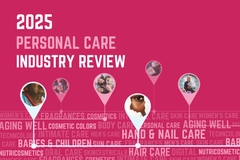Scientists use machine learning to estimate hair density
Scientists in Taiwan have used an open-source machine learning tool to automate the hair density estimation process. A study published in the International Journal of Cosmetic Science highlights the accuracy of algorithm-based hair density estimation, which could streamline the process for specialists.
“This approach, which focuses on scalp coverage and erosion features, can streamline and improve the objectivity of clinical hair analysis,” say the study authors.
Hair density refers to the number of hairs per square centimeter on someone’s scalp. People can have a range of hair density, but scientific estimates indicate humans have approximately 150 to 233 hairs per square centimeter on their head. Additionally, men tend to have lower hair density overall than women and are also more likely to experience hair loss at some point in their lives.
Those concerned about hair health, hair loss and thinning or considering hair transplants will usually seek specialists who will perform hair density estimates to discuss treatment.
Traditionally, hair density is estimated by manual counting — simply counting out each hair in a square centimeter space on someone’s head. This method is time consuming and can provide an inaccurate estimate as different regions on the head have varying hair densities.
Other methods include taking close-up photos and videos and using computer software to estimate hair density — digital hair scanners are also on the rise. Machine learning can aid these methods by training an algorithm on a dataset to then make accurate predictions about overall hair density after a photo or image is uploaded.
In this new study, researchers trained an open-source machine learning tool called XGBoost to predict hair density. XGBoost is an ensemble learning algorithm that combines multiple model runs to correct errors and make better predictions. It also achieves high accuracy on less data.
For this study, the researchers used a dataset of nearly 750 scalp images to train the model and then tested the estimation performance on 150 other scalp images.
The resulting XGBoost hair model had a 95% accuracy rate when evaluating the test images, say the authors, and is the most accurate machine learning tool to estimate hair density compared to previous studies that used neural networks to do the same.
Solutions for hair loss and thinning
Consumers have consistently sought ingredients, products and methods that address hair loss and thinning. Some recent launches in the hair care space that specifically focus on this need include the Gro+ Advanced System from plant-based hair care brand Vegamour. The vegan hair care system targets severe shedding and hair loss. Aveda also unveiled a vegan, multi-step collection for those looking to increase hair density.  Treatment can help address hair thinning and loss.
Treatment can help address hair thinning and loss.
Vytrus Biotech created the hair care ingredient Capilia Longa aimed at hair growth reactivation, targeting hair loss and increasing hair density. The ingredient uses turmeric stem cells to help reactivate hair follicles.
Still, some methods that claim to address hair loss have drawn skepticism, like red light therapy. Personal Care Insights interviewed experts about skeptical beauty trends, such as the insufficient data to prove that red light therapy can regrow hair.














